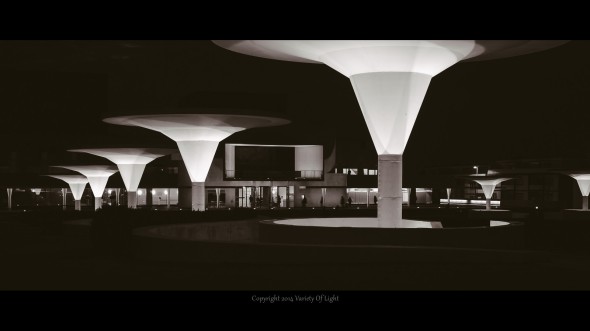Quite recently, I finally had the chance to test the Zeiss Loxia 50mm extensively, when a friend of mine borrowed it to me over the weekend.
The Zeiss Loxia is a remake of an older Planar optical design already available since decades. While such classic lens designs still have a style in its own right, they do not perform very well on some of the actual full frame digital sensors and for example are showing a rather weak performance in the corners of an image. To cut a long story short, the Zeiss Loxia design is a special adoption to the Sony E-type camera lens mount for full-frame sensors with the promise to overcome some of that typical artifacts.
What impressed me almost instantly was the build quality of this lens. It’s a very solid and all metal construction and both, manual focus and aperture dial are absolutely tight yet smooth to operate. That already makes it fun to use but also the stylish elegant look of the body contributes here as well, no doubt. Though, there are some minor issues. Both focus and aperture control rings do not stick out of the lens body and the aperture control works the other way around as one would expect if used to other Leica or Voigtländer stuff. So one can expect quite some confusion when operating the lens to the very first time(s).
The image quality is very good. This lens indeed eliminates some of the typical flaws of older M-mount lenses adopted on E-mount (full-frame) and as a result sharpness wide open can not only be seen in the very center of the image but also to the sides. Overall it seems that a very balanced image quality has been achieved where none of the artifacts like CA or vignetting sticks out. The only artifact which appears a little bit more prominent is distortion which might be rather annoying when shooting architecture/geometry but which can be easily corrected in post production.
The Zeiss Loxia is a straight manual lens but supports focus peaking on the Sony A7 as soon as the focus control gets turned which makes it a great companion for street photography and having a f2.0 aperture makes it very versatile even in low light conditions. To me, it’s an almost perfect lens for street photography – as long as one prefers the 50mm focal length and manual control for this. Remains the question if this is actually a better option rather than having an older (used) Leica Summicron adapted to E-mount. Well, for today I leave that question open and maybe will give an answer in another upcoming article.
Also taken with the Loxia 50mm on Sony A7:
light trails
nailed it




When you say focus peaking you are talking of focus assist that is magnifying the EVF/LCD image?
Focus peaking works without ever touching the focus of the lens and is represented with countours that are showing areas in focus.
LikeLike
exactly!
LikeLike
Focus Peaking and Focus Assist are both used in only in manual focusing, but they’re two different features. When Focus Peaking is enabled, it puts a bright yellow, red or blue outline around objects in the EVF when they are in focus manually. It’s designed to make manual focusing easier and I find it works very well. You can select the outline color and intensity in the menu. I use yellow at medium intensity in most situations.
LikeLike
Did u find the manual focus assist functions as accurate as rangefinders focusing techniques?
LikeLike
rangefinder focusing is inferior, imho.
LikeLike
very interesting
LikeLike